How to Grow Zucchini. Zucchini, also known as Courgette, is a member of the Cucurbit family, which includes Cucumber, Watermelon, Pumpkin and Corn. It is one of the easiest vegetables to grow in your garden backyard, and is an ideal plant for the beginner vegetable gardener. It is a must for any productive garden.
It will produce huge volumes of fruit throughout the summer and you will often find there are periods of the year where you have more Zucchini than you know what to do with. For a family of five, 3 to 4 plants is more than adequate to supply your needs, give some away to family and friends, and store some for later in the year.
Zucchini is a frost tender plant that requires warm conditions to thrive. Plants can be established by direct sowing into soil, or in modular trays in Spring or Early Summer. They require at least 15°C (59°F) to germinate. Any seedlings established in a greenhouse should not be planted out, until the risk of frost has passed. Zucchini seeds are widely available in store but the selection of seeds available online is much broader. Companies such as Seeds Now, Seeds for Generation and St Clare Seeds offer a much wide selection of seeds. For all 3 companies look under Summer Squash.
Zucchini prefers to be planted in a rich, moist soil with plenty of organic matter added. They prefer a pH ideally between 6.5 to 7.0 but they will tolerate a pH as high as 7.5. For more information on how to test pH and adjust the pH of soils go to https://planyourpatch.com/why-is-ph-important-in-soil/.
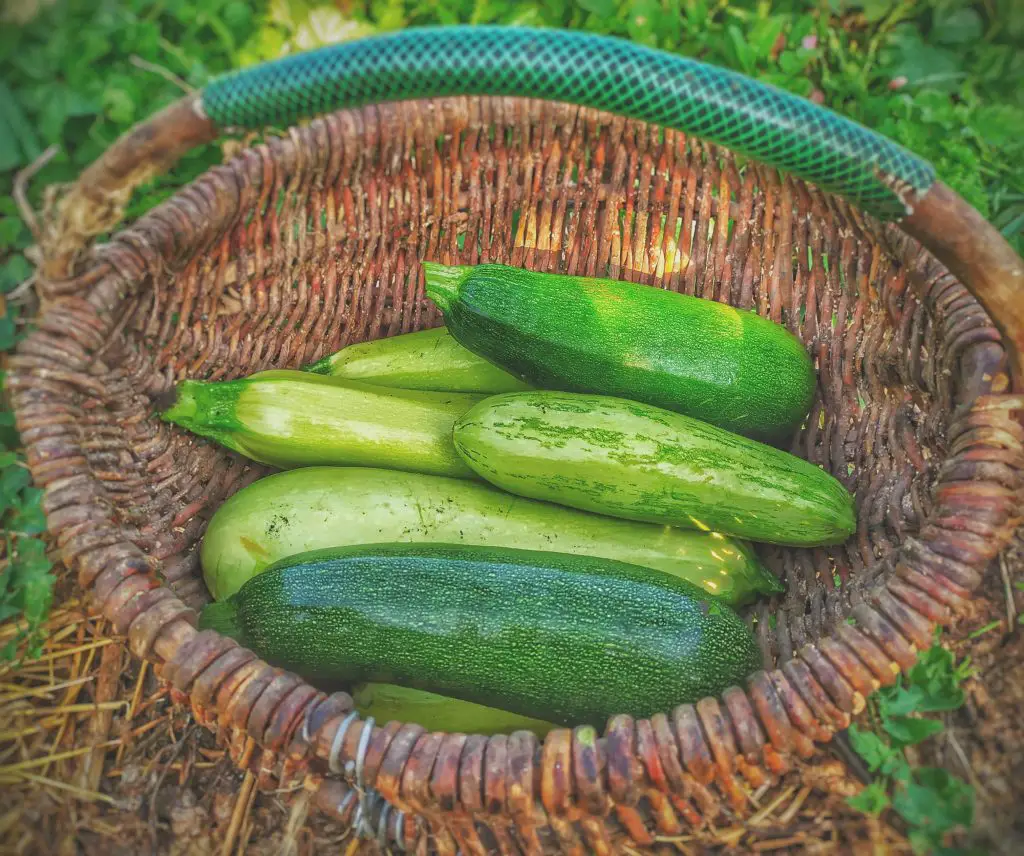
When planting out they should be spaced approximately 75cm (30 inches) apart. They need to be watered regularly to ensure that they remain moist throughout the growing season. They generally require little attention once established and will produce fruit in around 80 days.
It is best to pick fruit when it is 20-25 cm (10 inches) long, as the skin and seeds become tough and fibrous if the Zucchini gets too large. The speed of growth at the height of the season can be extremely rapid, and a mature Zucchini can reach a size of 1 m (40 in) long or more if you are not paying attention. A Zucchini with the flowers attached, is a sign of a truly fresh and immature fruit, and it is especially sought after for its sweeter flavour. Regular picking will also encourage the plant to produce more fruits.
The plant will often develop powdery mildew towards the end of the season this is not a problem, as it does not affect the quality of the fruit.
Growing Zucchini in Pots
If space in the garden is limited, it is possible to grow plants in containers or pots. As the plants are relatively large, a container with a diameter of at least 60cm (24 inches) and a minimum depth of 30 cm (12 inches) is recommended. The container will require drainage holes at the bottom. As Zucchini is a fast growing vegetable, it requires good quality soil with plenty of nutrients.
In a container, the plants needs to be watered more regularly than in the garden, to avoid drying out, every day or so is recommended. The plant will also benefit from a regular application of fertiliser every 4 to 6 weeks. Additionally, the plant may require some support during the season, a Tomato cage inserted into the container works very well to prevent accidental damage to the plant.
The varieties that are most suited to containers are dwarf plants such as Cue Ball, Gold Rush, Eight Ball, Raven, Black Beauty, Bush Baby and Patio Star.
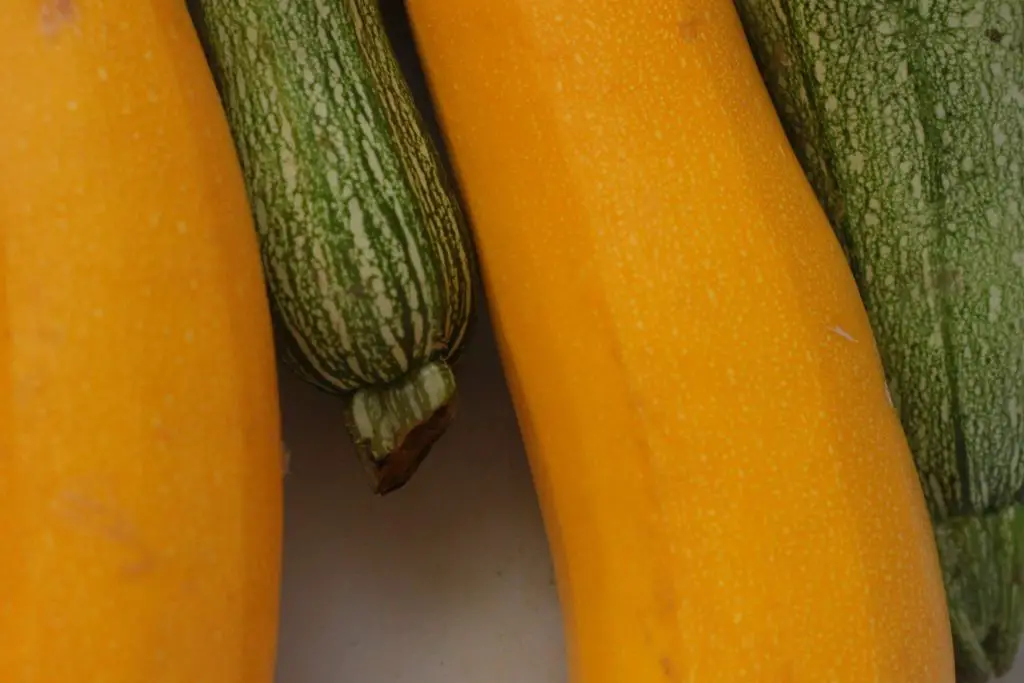
Common Problems with Zucchini
Fruit Remains Small and Sometimes Falls Off
Zucchini plants will sometimes develop fruits that remain small and eventually die off. The main reason for the fruits not to develop is that they have never been pollinated. As a result, the fruit produced cannot develop seeds; therefore, the plant chooses not to continue to put energy into that particular fruit, as it will not help with the ongoing survival of the species.
To overcome this issue, hand pollination can be carried out to ensure the fruits develop properly. Zucchini plants produce male flowers on the plant that can be used to pollinate the female flowers on the plant. The male flowers are those ones that are produced on the end of a stem, whereas the female flowers appear at the end of the Zucchini fruit.
To pollinate the Zucchini fruit, take one of the male flowers and rub the centre of the flower onto the centre of female flower for a few seconds. One male flower can be used to pollinate many female flowers, and this process will ensure that the fruit develops properly.
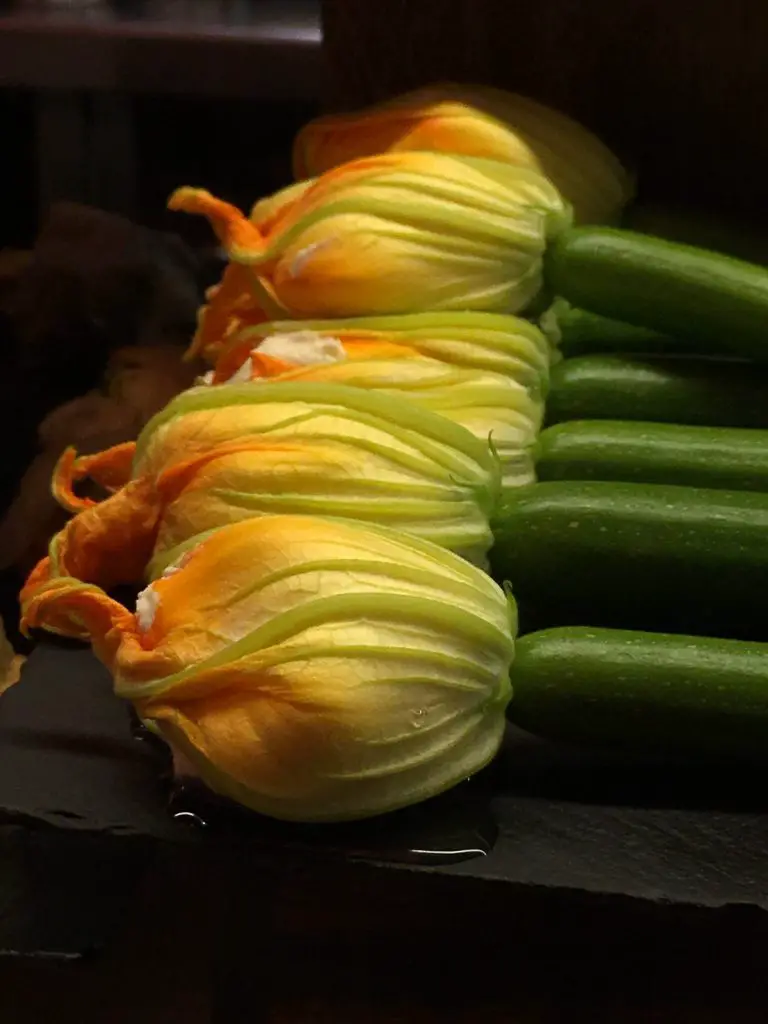
Blossom End Rot
Zucchini can also be affected by blossom end rot, in a similar way to Tomatoes and Peppers. This occurs when the end of the fruit begins to darken and rot. This problem is caused by a Calcium deficiency, which is most commonly caused by insufficient and inconsistent watering. Without sufficient moisture, the plant is unable to access the calcium ions, which present in the soil. The plant accesses Calcium at the same time it absorbs moisture through the roots, as Calcium ions are water-soluble. Adding more Calcium to the soil will not solve the problem, only more regular and consistent watering.
Powdery Mildew
Powdery Mildew is a fungal disease that generally appears late in the growing season. It appears as a white powder-like coating on the surface of the leaves, but it is largely an aesthetic issue, that generally has little impact. In severe cases, it can lead to reduction in the level of photosynthesis occurring, which can reduce the volume of fruit production, however this is rare.
To reduce the chances of powdery mildew, ensure there is sufficient spacing of plants, as this will ensure adequate air circulation. When watering, avoid getting the foliage wet, or water at times of the day when the water will not be allowed to remain on the leaves, for an extended period of time. The other alternative is to plant varieties that are more resistant to powdery mildrew. Some of the varieties that are recommended are Anton, Dunja, Astia and Emerald Delight.
If the disease remains a major concern, organic fungicide based on Potassium Bicarbonate may be used. To learn more about powdery mildew go to https://planyourpatch.com/why-are-my-pumpkin-leaves-turning-white/.
However, my personal view is that this disease is not worth worrying about, as it almost always has little impact, and appears at a time of year when you have more Zucchini than you know what to do with.
Saving Zucchini Seeds
Saving zucchini seeds is really easily and quick. Simply allow the plant to produce one large fruit. For most people this happens later in the season, largely by accident, as your kitchen becomes overwhelmed with zucchini.
The zucchini can be cut in half and the seeds can be scraped out with a spoon. Any excess pulp should be removed by washing the seeds in water and then allowing them to dry.
However, it is important to note that saving the seeds should only be done with heirloom and open pollinated varieties. Seed packets that are labelled “F1 Hybrid” cannot be saved. For more information on the difference between hybrid, open-pollinated and heirloom seeds go to https://planyourpatch.com/what-is-an-f1-hybrid-seed/.
What To Do With All That Zucchini
When it rains, it pours. A Zucchini plant can sometimes take a little while to produce its first fruit, however, once it does it often becomes like a tsunami of fruit. In the past, I have produced 30-40kg (60-80lb) of fruit from 3 plants. To ensure that you make the most of your harvest, here are a few things that you can do.
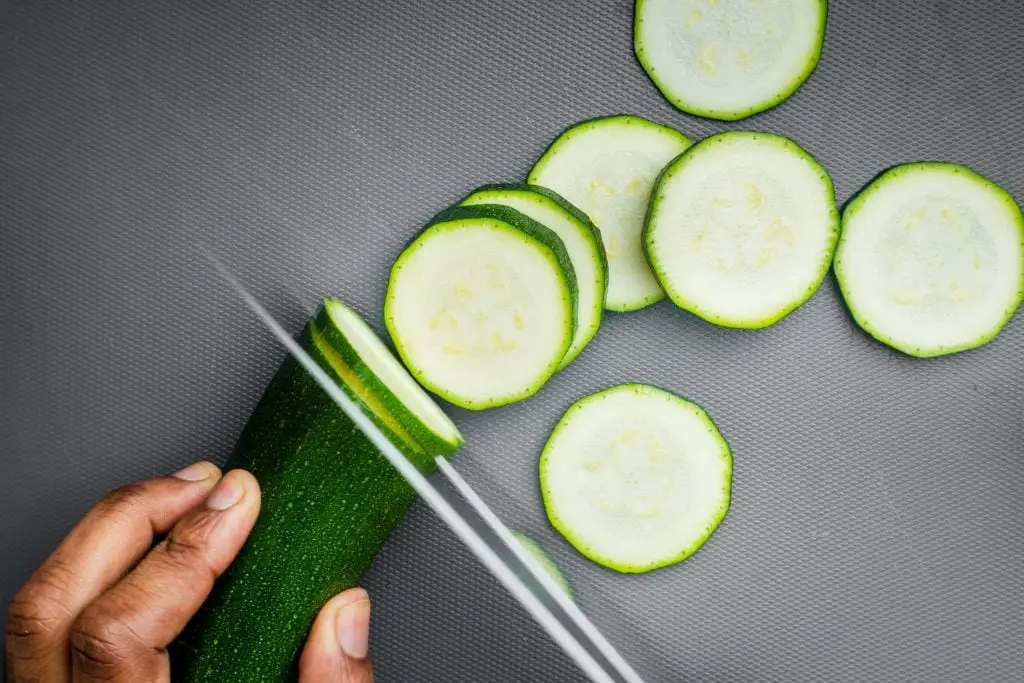
- Pick the Zucchini when it is Young – They are best used fresh when they are young and this will reduce the volume of Zucchini.
- Use it in Baked Goods – such as Zucchini Bread, muffins and cake.
- Use them in Stuffed Zucchini recipes – Zucchini boats.
- Make Zucchini Slice and Fritters.
- Add it to Sauces – I often add it to pasta sauce.
- Make Relish and Pickles – There is a recipe at the end of this article.
- Make Zucchini Spaghetti – A good alternative for those want to reduce carbohydrates in their diet.
- Freeze it – Zucchini can be cut into chunks, blanched and then frozen. Alternatively, they can be grated and then frozen. When grating, it is a good idea to drain the excess water off.
What Can I Do with My Giant Zucchini?
Throughout the season, it is inevitable that you will end up with a gigantic Zucchini at some stage. These Zucchini will have relatively hard seeds and tough skins and as such, they are best suited for recipes that require shredded Zucchini flesh.
When using large Zucchini in these types of recipes, it is best to remove the skin and the seeds before shredding the flesh, to avoid having tough, hard, lumpy bits appear in the final dish. Some of the most suitable dishes are Zucchini slice, fritters and patties of which there are myriad of recipe variations available on the internet. The other common way to use this type of fruit, is in a Zucchini pickle. The recipe I use every year is below.
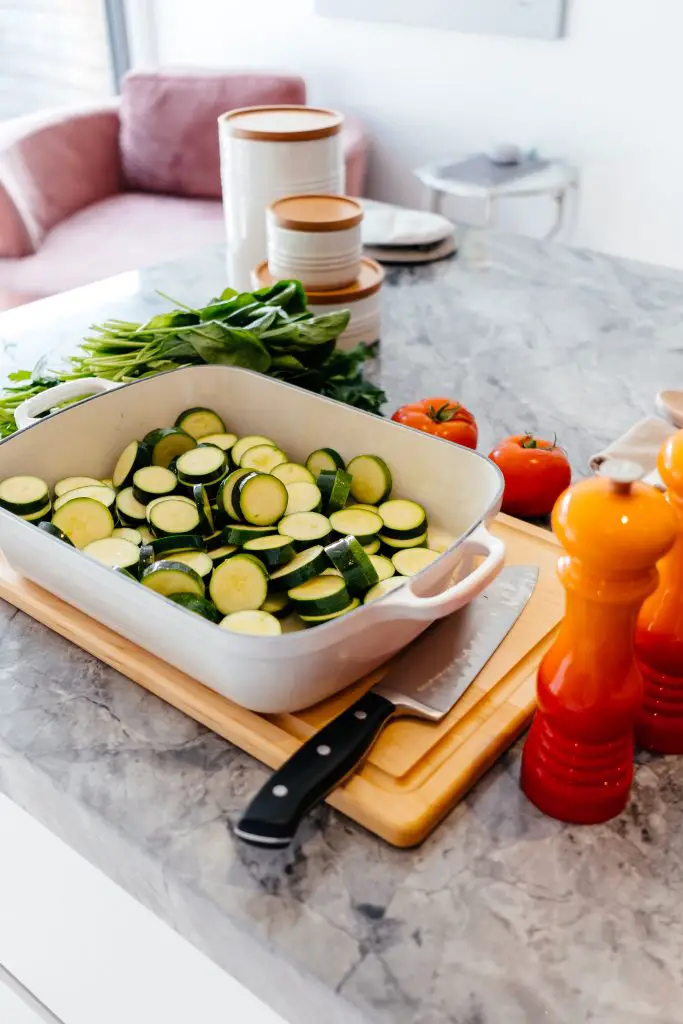
Zucchini Pickle
Ingredients
- 1 kg of zucchini, grated
- 1 kg of onions, sliced
- 1/4 cup (60g) of salt
- 1 cup (250g) of sugar
- 2 teaspoons of mustard seed
- 1 teaspoon of celery seed
- 1/2 teaspoon turmeric
- 1 L (approximately) of vinegar
Method
- Place the zucchini and onions in a large bowl and sprinkle with salt and allow the mixture to stand for 2hrs.
- Drain the excess water and transfer the ingredients into a large pot and add the remaining ingredients.
- Boil for 5 minutes and transfer the pickle into sterilised jars when hot and seal the lids immediately.
